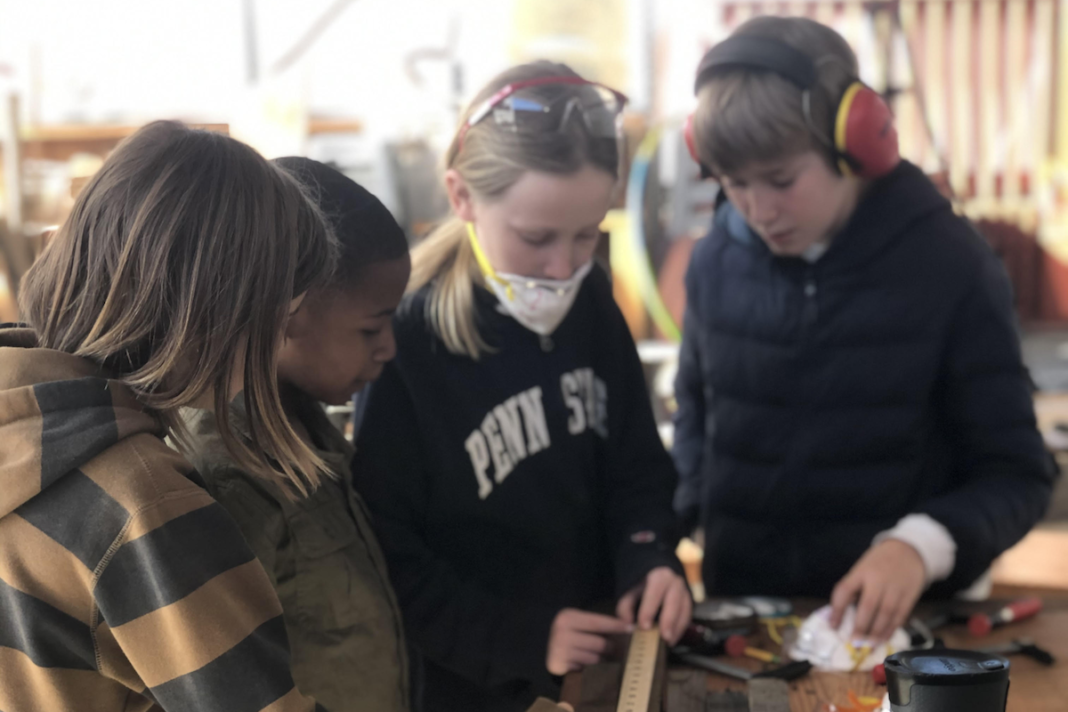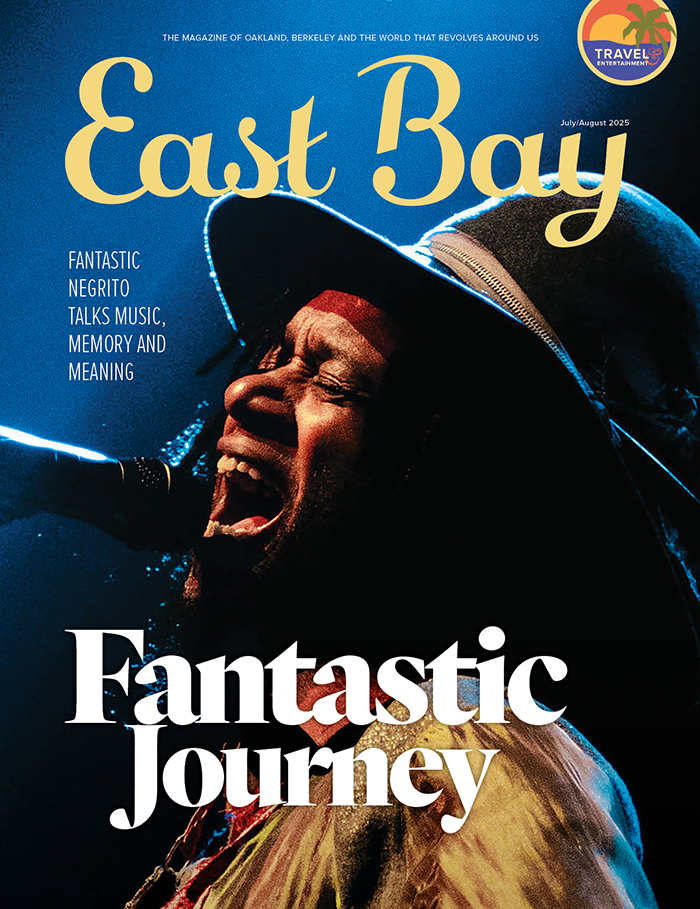Oakland’s Park Day School kindergarten through eighth-grade students are using innovation and systems thinking to lead themselves into the future that in so many ways is already here.
It has become clear that the future, which is rapidly arriving, is already more comprehensible to this new generation than of the ones that came before, this writer included. Take, for example, the struggle of those over 30 to grasp the use of preferred pronouns, while the practice is totally clear to a 10-year-old with exposure to a marginally trans-supporting culture.
By including innovation and social justice in its curriculum, Park Day School is giving its students the tools to address this future by bringing their own solutions to the table.
When speaking with the school’s director of equity and inclusion, Arjuna Sayyed, for this article, he cited the famous quote from George Washington Carver: “No individual has any right to come into the world and go out of it without leaving behind him distinct and legitimate reasons for having passed through it.”
The work of living with a purpose in mind has to start young, according to Sayyed. “You’re not going to wake up one day at age 21 and be enlightened. [Reflecting and innovating] are muscles, mindsets, practices you have to really cultivate over time.”
According to Ilya Pratt, the Design+Make+Engage program director at Park Day School, hands-on, big-picture, project-based learning lets kids really connect their actions with outcomes. “Very complex project-based learning… gives time to talk about whatever it is they’re doing,” said Pratt. Rather than a lesson and discussion, project-based learning lets students spend much longer on a topic, allowing them to look at the topic through multiple lenses. This is especially true when the students work with Pratt in the on-site Innovation Workshop. “When [we are] working with our hands, for a lot of us, our minds get expansive.”
Innovating by Hand
Central to the Park Day School’s educational approach is the Innovation Workshop, a hands-on workshop on campus. Although it may share many of the visual cues of a school woodworking shop, the Innovation Workshop tackles the implications of projects on a much greater scale. It works by connecting classroom lessons with the problem-solving process called design thinking.
“They’re doing all that math with their math teacher, and then I come in and ask them to take on the mindset of engineers,” said Pratt. “Then they start using a laser cutter to quickly prototype out these car bodies,” as one example.
Developed originally to connect product design to the needs of technology users, design thinking has moved far beyond its spiritual home in Silicon Valley. The process emphasizes rapid trial and error to learn what a product’s users actually like, with a healthy attitude toward failure as a mode of learning.
“Very simply put, [design thinking is about] generating solutions and iterating on them,” said Pratt. Despite its power as a learning tool, there are limitations. “As teachers, you can’t always go through all the steps [of the design process]. It’s not always meaningful to the kids, and you don’t always have time to go through that whole process with kids.”
So the school offers students practice in another model of problem solving, systems thinking. “It’s really just a way to invite kids to think more deeply about [our curricular endeavors].”
Thinking in Systems
Systems thinking is a way of understanding the world that looks at how the parts of any system contribute to its outputs, and then asking questions like, is this outcome what was intended? Or, how will changing parts of this system affect the outcome? What improvements can be made? While the approach also comes from working with technology and complex organizational management, its power is in its simplicity.
“You can break down systems thinking for kindergarteners,” said Sayyed. “[For example], a pen is a system, right?” Outcomes of using a pen include: the ink both on the paper and smeared on the fingers, images and letters, and the ideas communicated through writing. This type of thinking allows even the youngest school-aged children to make connections between their physical actions and the impacts of their ideas.
“Then in eighth grade we’re talking about social systems such as school systems, voting systems, etc. Essentially taking any aspect of our world that has some sort of utilitarian function and distilling it down to the parts,” said Sayyed. In this way, the students come to understand that “people are also parts of systems.”
The Average Sixth Grader
Here is an example of how these approaches can apply to standard curriculum. Across California, sixth graders are taught the various mathematical approaches to determining an average. At Park Day School, when those students enter the Innovation Workshop, they start to think through the meaning of “average” and when it should—or if it even can—be applied. The project? Crafting an Average Sixth Grader over a biology class skeleton.
“Average sixth grader doesn’t mean white, just because on average there are more white people [in the U.S.],” said Pratt. “The kids are going to get that you can’t average some things out.”
“‘What does it mean to be an average person?’ and suddenly it’s a really expansive way of posing that question,” Pratt continued.
Those teacher-led experiences inspire student-driven projects like the “Queer Counter.” Introduced by a student, the Queer Counter is a place where all queer students at the school can be counted without being exposed. Now a permanent installation on the school grounds, any student can make a tally mark on the counter to identify their sexual orientation, anonymously if they wish. The project recognizes that there is great power in being seen, even if one is not ready to be out.
“The level of empowerment that it gave this group of kids who were more, you know, outside of the traditional social mix, it was just fantastic,” said Pratt. “It was that act of making an object that had a purpose.”











